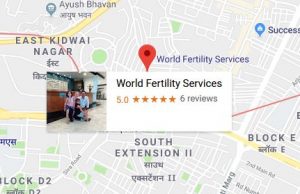Rely on Best Male Infertility Treatments in India with Us as surgical sperm retrieval
Making no space of doubt upon the medical arena, this is clearly to believe on the word-medicine when to think living heal and hearty lifestyle. Yes, the medical industry is none other than reliance among those who are looking to breathe in healthy inhalation. From all over the world, it is seen that healthy living is the key to living long. Not only does the medicine seem to treat fatal diseases, but also to help those who have been unable to maintain the word-Family to them. Here, Male Infertility Treatment India available at us have shown their presence significant to accentuate on “Grow Family”. So rely on one of our fertility solutions known as surgical sperm retrieval.
At us, Surgical Sperm Retrieval (SSR) renders itself as a method that is used to obtain sperm directly from the testis. It may be used for men where we have been not capable to get well sperm from the ejaculate. Also it may be suitable for men with spinal injuries and where there are problems with normal ejaculatory function.
Male Infertility Treatment India at WORLD FERTILITY SERVICES
- Highly upgraded approaches and methods
- Advanced mechanisms for fertility treatment in Delhi
- Well-known fertility experts and specialists
- Top guaranteed fertility treatment cost in Delhi
- Reach out at us possible@worldfertilityservices.com
- Or Call us: +91-9560712022
Who benefits from Surgical Sperm Retrieval?
- Men who have had a vasectomy or a failed vasectomy reversal;
- Men who are carriers of firm genetic conditions such as cystic fibrosis;
- Men who do not generate sperm in their semen, for example in cases of retrograde ejaculation.
How are we pool fertility treatments?
You can have the best Male Infertility Treatment India
for infertility conditions. Our fertility expert recommends the top method for every issue. It helps in successful conception. So, the following procedures are available:
- Male fertility treatment in India, procedures, diagnoses

- Female fertility treatment in Delhi, procedures, diagnoses
- IVF (In Vitro Fertilization)
- ICSI (Intracytoplasmic Sperm Injection)
- IVF with donor eggs
- IVF with donor sperm
- IVF with donor embryo
- IMSI/PICSI
- PGD/S (Preimplantation Genetic Diagnosis/Screening)
- FET (Frozen Embryo Transfer)
- Surgical Sperm Retrieval SSR (TESA/PESA/MESA)
- Laparoscopy, hysteroscopy, hysterectomy
- Eggs, sperm, and embryo cryopreservation
How is Surgical Sperm Retrieval performed?
Percutaneous Epididymal Sperm Aspiration (PESA):- The method is usually performed under sedation with pain relief but can be executed under General Anaesthetic.
- In some men, sperm can be taken out directly from the epididymis.
- A fine needle gets passed through the skin of the scrotum and is placed in the epididymis.
- Small amounts of fluid could be examined for sperm.
Testicular Sperm Aspiration (TESA):
- Sperm is extracted unswervingly from the testicles by passing a fine needle directly into the testicle.
- A small amount of tissue gets extracted and prepared in the laboratory and examined for sperm.
Sperm obtained are either frozen for ensuing use or prepared using a procedure of washing. A single sperm is then injected unswervingly into each egg in a process known as intracytoplasmic sperm injection (ICSI).

Are Sperm always attained by using Surgical Sperm Retrieval?
Not all patients are suitable for this technique and irregularly, no viable sperm can be recuperated.
Sperm can only be obtained if the man’s testicles are generating sperm. Unluckily, it is not always possible to forecast. Hormone tests could assist, but a test biopsy is the only way to be certain.
What are our fertility treatment success rates in Infertility?
WORLD FERTILITY SERVICE has the highest Male Infertility Treatment India success rate. But the fertility treatment success rate in Delhi is not the same for every couple. It depends on various factors related to their health and infertility. The major aspect is their age. For instance:
fertility treatment success rate in Delhi is not the same for every couple. It depends on various factors related to their health and infertility. The major aspect is their age. For instance:
- The woman at the age of below 25 has between 55 to 65%.
- The woman at the age of 30 has between 50 to 55%.
- The woman at age of above 30 has between 45 to 50%.
- The woman at the age of 35 has between 40 to 45%.
- The woman at the age of above 35 has between 35 to 40%.
- The woman at the age of 40 or above 40 has between 25 to 30%.
Tests before Male Fertility Treatment
- Follicle Stimulating Hormone (FSH), Luteinising Hormone (LH) and Testosterone are measured.
- Very high FSH and LH and low Testosterone suggest testicles are not functioning well and chances of obtaining sperm get lower.
- If the testicles are very small, the chances of getting sperm are lower.
- Conditions such as Congenital Absence of the Vasa Deferens may be recognized by examination.
- A few of men will not generate sperm due to chromosome abnormalities.
- This may not reason any problems other than sperm production but could cause problems for children.
- It is very important as we constantly make sure to the man’s chromosomes before the biopsy.
Contact Us Now!
Options to Male Fertility Treatment
|
Procedures |
Charges in INR |
|
IVF cycle (with self-eggs) |
INR 2,30,000 to INR 2,70,000 |
|
IVF cycle (with donor eggs) |
INR 3,80,000 to INR 4,20,000 |
|
ICSI cycle |
INR 2,30,000 to INR 2,70,000 |
|
Frozen embryo transfer (FET) |
INR 80,000 to INR 1,00,000 |
|
Intrauterine Insemination (IUI) |
INR 20,000 to INR 25,000 |
|
Ovulation Induction (OI) |
INR 3,500 to INR 10,000 |
|
Intracytoplasmic morphologic sperm injection (IMSI) |
INR 35,000 to INR 40,000 |
|
Physiological Selection of Sperm for ICSI (PICSI) |
INR 30,000 to INR 35,000 |
|
Testicular Epididymal sperm aspiration (TESA) |
INR 50,000 to INR 56,000 |
|
Percutaneous Epididymal Sperm Aspiration (PESA) |
INR 50,000 to INR 60,000 |
|
Micro TESA |
INR 57,000 to INR 65,000 |
|
Embryo freeze |
INR 30,000 to INR 35,000 (for six months) |
|
Sperm freeze |
INR 30,000 to INR 35,000 (for six months) |
|
Assisted Hatching |
INR 32,000 to INR 36,000 |
|
Preimplantation Genetic Diagnoses (PGD) |
INR 3,90,000 to INR 4,10,000 |
|
Embryo donation |
INR 2,60,000 to INR 2,80,000 |
|
Preparation of the embryo donor |
INR 70,000 to INR 80,000 |
Success? Check Your Chances to Conceive…
At us, we evaluate each case scientifically and inform each fertility client of what to expect honestly
Consult US!
Why is infertility high in India? How common is infertility in India? Which state has the lowest fertility rate in India?Frequently Asked Questions about Infertility Treatments in India
Male Infertility Treatment India affects approximately 15 percent of couples. Late marriages, stressful lifestyles, obesity, high junk food intake, smoking, alcoholism, and drug addiction contribute to the problem.
India has a population of as many as 27.5 million infertile people, including men and women, according to the Indian Society of Assisted Reproduction. However, there is little open discussion about the situation’s mounting concerns and widespread ignorance.
Sikkim has the lowest fertility rate of 1.1. This is equivalent to the lowest fertility rate in the world of 1.1 in South Korea. According to UN Population data, the highest fertility rate is in Niger (6.9) and Somalia (6.1).


 WhatsApp us
WhatsApp us